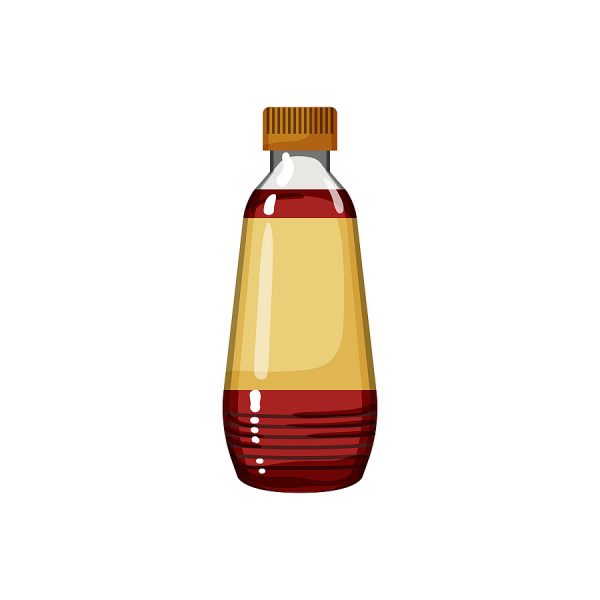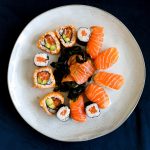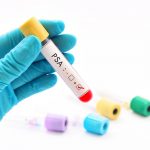People over in Japan often eat a traditional cucumber salad called sunomono. This dish is really easy to make. It’s simply sliced cucumbers in rice vinegar seasoned with a little soy sauce and sugar, and topped with sesame seeds. Other items, like seafood, seaweed or tomatoes, can be added as desired.
But there is something very interesting about this dish. Researchers in Japan found that men who habitually eat it have significantly lower blood pressure compared to those who don’t eat it regularly.
What is the big blood pressure lowering secret behind sunomono?
It’s the rice vinegar. We don’t usually see much vinegar in the meals we eat, but sunomono is one of the few dishes that has a high vinegar content. And vinegar – whether it’s rice, apple cider or white vinegar – has a positive effect on blood pressure.
As a matter of fact, a new meta-analysis published in the December, 2022 volume of Complementary Therapies in Medicine found that 30 ml of vinegar daily – about an ounce, or two tablespoons – reduces systolic blood pressure (top number) by 3.25 mmHg and diastolic blood pressure (bottom number) by 3.33 mmHg.
And it’s not just your blood pressure that vinegar has a positive impact on.
Drinking one-half to one ounce a day for 12 weeks can also help reduce body mass index, waist circumference and belly fat. Plus it helps keep triglyceride levels in check.
Vinegar is Great for Blood Sugar Control
Another great thing about vinegar is that it has the ability to lower blood sugar and improve insulin sensitivity.
In people who are insulin resistant, two tablespoons of vinegar with meals can improve insulin sensitivity after a high carb meal by about 34%. Additionally, it cuts after-meal blood sugar spikes by as much as two thirds.
Regular consumption of vinegar can also help reduce hemoglobin A1c (HbA1c) values in patients with type 2 diabetes. (The higher your HbA1c number, the higher your average blood sugar levels are.)
It appears that the acetic acid in vinegar slows down the rate of gastric emptying which, in turn, slows down the breakdown of starches. So when you take vinegar just before a carbohydrate rich meal, less sugar will get absorbed into your bloodstream.
But that’s not all.
If your insulin levels fall too low overnight, it can cause your blood sugar to be high when you wake up in the morning. And, while not conclusive, some data suggests that taking two tablespoons of apple cider vinegar with an ounce of cheese at bedtime can lower waking blood sugar concentrations in people with type 2 diabetes.
How to Get More Vinegar in Your Diet
I love a good cucumber salad that’s been marinated in a blend of apple cider vinegar, olive oil herbs and spices. Add tomatoes, red onion, olives and anything else you want. Other than cutting up a few ingredients it doesn’t take much work to make, and it’s a tasty way to increase your vinegar intake.
I like to use the same apple cider blend as a salad dressing and to drizzle over my food. It adds a nice flavor when you use it on your vegetables, fish and meat. (Once you experiment with it a little, you’ll find your food tastes bland without out.)
Or, like some people, you might just want to take a quick shot of apple cider vinegar each day. One and done.
But beware! Vinegar is highly acidic. This means it will eat through your tooth enamel. Potentially, it could even damage your esophagus. So you always want to dilute it first.
I suggest mixing one to two tablespoons with about 8 ounces of water and a tablespoonful or two of honey, using a straw to drink it with. And always use an organic brand of apple cider vinegar that hasn’t been filtered and pasteurized.
In the meantime, keep in mind that getting more vinegar in your diet doesn’t mean you can eat off-limit foods and expect a miracle. It’s still up to you to eat wholesome foods and get regular physical activity to maintain healthy blood pressure, weight and blood sugar levels.
SOURCES:
Kanouchi H, Yamashita M, Kaimoto K, Kuwabara A, Kawakami Y, Takenaka S, Koriyama C, Kuwahata S, Takenaka T, Akasaki Y, Kubozono T, Miyata M, Ohishi M. Association of blood pressure and dietary intake of Sunomono, Japanese vinegared side dishes, in community-dwelling Japanese: A cross-sectional study. Heliyon. 2022 May 21;8(5):e09505.
Osaka Metropolitan University. Men over 40 who regularly eat sunomono more likely to be in lower blood pressure category, study finds: Vinegar-based Japanese side dish provided an opportunity for first observational study of dietary vinegar’s health benefits. ScienceDaily. 15 July 2022.
Shahinfar H, Amini MR, Payandeh N, Torabynasab K, Pourreza S, Jazayeri S. Dose-dependent effect of vinegar on blood pressure: A GRADE-assessed systematic review and meta-analysis of randomized controlled trials. Complement Ther Med. 2022 Dec;71:102887.
Kondo T, Kishi M, Fushimi T, Ugajin S, Kaga T. Vinegar intake reduces body weight, body fat mass, and serum triglyceride levels in obese Japanese subjects. Biosci Biotechnol Biochem. 2009 Aug;73(8):1837-43.
Johnston CS, Kim CM, Buller AJ. Vinegar improves insulin sensitivity to a high-carbohydrate meal in subjects with insulin resistance or type 2 diabetes. Diabetes Care. 2004 Jan;27(1):281-2.
Mitrou P, Petsiou E, Papakonstantinou E, Maratou E, Lambadiari V, Dimitriadis P, Spanoudi F, Raptis SA, Dimitriadis G. Vinegar Consumption Increases Insulin-Stimulated Glucose Uptake by the Forearm Muscle in Humans with Type 2 Diabetes. J Diabetes Res. 2015;2015:175204.
Mitrou P, Petsiou E, Papakonstantinou E, Maratou E, Lambadiari V, Dimitriadis P, Spanoudi F, Raptis SA, Dimitriadis G. The role of acetic acid on glucose uptake and blood flow rates in the skeletal muscle in humans with impaired glucose tolerance. Eur J Clin Nutr. 2015 Jun;69(6):734-9.
Johnston CS, Gaas CA. Vinegar: medicinal uses and antiglycemic effect. MedGenMed. 2006 May 30;8(2):61. White AM, Johnston CS. Vinegar ingestion at bedtime moderates waking glucose concentrations in adults with well-controlled type 2 diabetes. Diabetes Care. 2007 Nov;30(11):2814-5.






